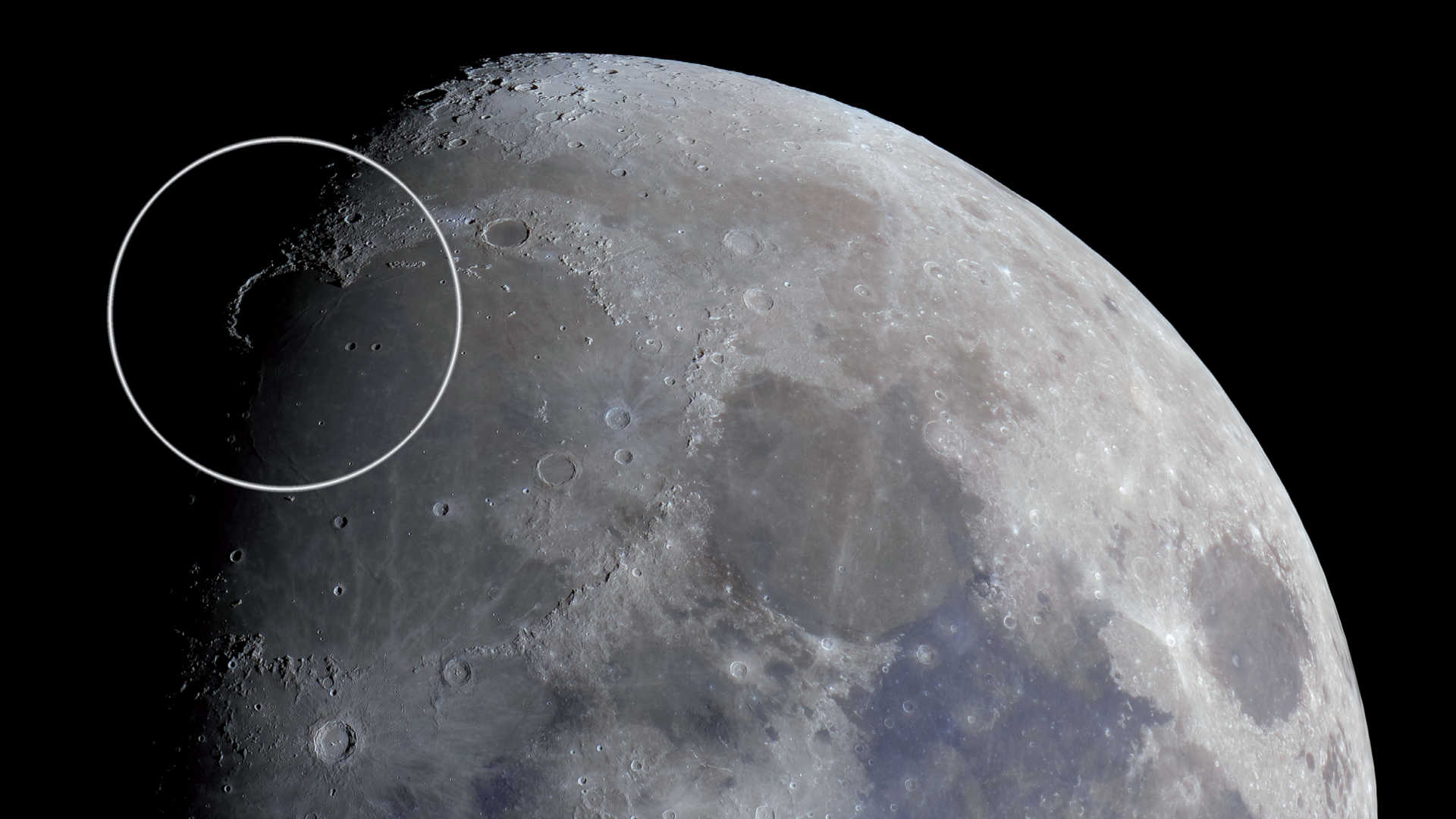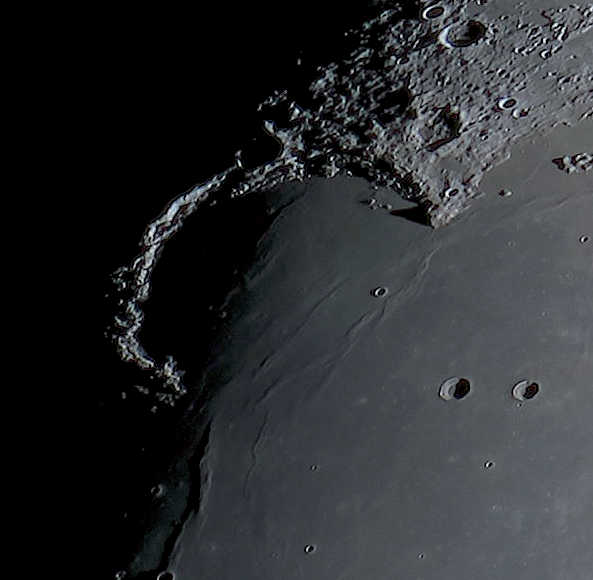The Golden Handle on the Moon
The Golden Handle is one of the most beautiful plays of light on the surface of the Moon. The peaks of Montes Jura rise in the darkness of the night side of the Moon.
 The Golden Handle appears as a small, bright arc that extends right into the unlit night side. Rolf Hempel
The Golden Handle appears as a small, bright arc that extends right into the unlit night side. Rolf HempelThe Moon has many light and shadow effects due to the flat light close to the terminator. They are summarised by the old term clair-obscur. Probably one of the most beautiful examples of this is the so-called Golden Handle. The peaks of Montes Jura (Jura mountains) rise out of the shadows, and are illuminated over a period of several hours. At the same time, the plains of Sinus Iridum (Bay of Rainbows) are still partly in darkness.
Bright arc across the night side
 The peaks of Montes Jura rise out of the shadows and are illuminated over a period of several hours. Rolf Hempel
The peaks of Montes Jura rise out of the shadows and are illuminated over a period of several hours. Rolf HempelFrom Earth, we see a small bright arc, which extends into the unlit night side of the Moon. In some observation publications, the spectacle is known as the "jeweled handle effect" which is ascribed to the English author and astronomer Sir Patrick Moore, who has been describing this phenomenon in his books since the 1970s. The Golden Handle is now a popular and well-known observation target, and information about the best time to see it can be found on the Internet.
In principle, the phenomenon occurs monthly per lunation, 24 hours after the Sun rises over Copernicus. However, it is not always possible to observe the Golden Handle, as the Moon may be below the horizon or still in the daytime sky.
With the naked eye?
Small binoculars are all you need to clearly make out the Golden Handle. With a telescope, you can start with a low magnification to get an overview, and then try higher magnifications to observe the illuminated mountain peaks in more detail.
Especially sharp-eyed observers can try to see the Golden Handle without any optical aids. In this case, the best time is when the Moon is high in the not yet completely dark sky, e.g. at dusk. The Handle appears at an angle of around 60 degrees and, with the naked eye, it should appear as a tiny bulge from the terminator in the direction of the night side.
Best visibility 10 or 23 days after New Moon
Author: Lampert Spix / Licence: Oculum-Verlag GmbH
